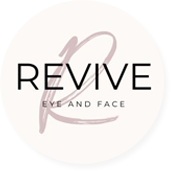Ptosis Treatment
If you have drooping upper eyelids, you are likely dealing with something called ptosis. This condition can cause the margin of the upper eyelid to droop down and obscure the colored part of the eye (iris and pupil). The degree may vary, ranging from mild to severe, even completely covering your pupils. But Columbus Eyelid offers our patients a way to address this condition with ptosis treatment in Central Ohio.


What Causes Ptosis?
Ptosis can occur from various causes. In children, the most common cause of ptosis is improper development of the eyelid muscle, leading to decreased muscle strength.
In adults, ptosis may occur due to:
- Aging
- Trauma & injury
- Muscular, neurologic, or connective tissue diseases
The most common cause of ptosis in adults is stretching the eyelid muscle tendon. This often occurs with age or from “wear and tear” of the eyelids due to long-term contact lens wear, eye surgeries, or chronic eyelid rubbing.
Table of Contents
ToggleSymptoms
Symptoms of ptosis include:
- Difficulty keeping your eyes open
- Fatigue or straining sensation of the eyelid or brows (due to an increased effort to raise the eyelids)
Because the eyelids may be blocking vision, it may also cause difficulties with driving, reading, or computer work.

How Can I Treat Ptosis?
Treatment of ptosis will depend on the cause and degree of your condition. Ptosis surgery typically involves tightening the levator muscle tendon to elevate the eyelid to the desired position.
The main goals of ptosis surgery are to elevate the upper eyelid, allowing you a full field of vision and symmetry with the opposite eyelid. At the same time, you will look and feel more alert, refreshed, and rejuvenated.
Dr. Kauh will thoroughly evaluate your situation to determine the best treatment for your needs. He then will discuss in detail the postoperative expectations and recovery.
“Dr. Kauh was helpful, kind, and went above and beyond to make me
feel comfortable in the approach to my healthcare. I couldn’t recommend anyone better to provide cosmetic services.”

FAQ
Will insurance cover my procedure?
It depends. Most insurers require patients to undergo tests to determine this. Your insurance company will review the results of your tests to determine if your ptosis meets their criteria. Requirements may vary from one company to the next. Generally, the insurance company will review your medical record and documentation to see if the problem is causing a functional issue. If these criteria are not met, the surgery will be considered cosmetic.What is the difference between an eyelid lift, blepharoplasty, and ptosis surgery?
Eyelid lifting typically refers to blepharoplasty surgery. So those two terms are generally synonymous. Blepharoplasty surgery removes redundant tissue from the upper or lower eyelids. Cosmetic blepharoplasty is performed to provide a more youthful, rested eye appearance. Upper Blepharoplasty, in some cases, may be covered by some insurance carriers or Medicare. But only if significant visual field loss is caused by excess upper eyelid skin, such as with ptosis. Ptosis surgery specifically focuses on severely droopy upper eyelids.
What is the downtime after surgery?
The downtime following surgery varies from patient to patient. Factors include your age, health, type of job, and extent of the procedure. On average, patients can expect to take about one week off from work. Dr. Kauh will provide a personalized estimate of your downtime once you finalize a surgical plan.
How long does it take to heal after surgery?
Patient healing is variable, with some individuals healing much quicker than others.
Bruising & Swelling
Initial bruising and swelling tend to go away gradually but quickly in most cases. They tend to mostly fade within about two weeks, but it can take more time for swelling to disappear fully.
Eyelid and facial swelling tend to worsen the first few days following surgery. Ice packs, head elevation, and rest may help minimize swelling. Swelling will often improve considerably over the first 2-3 weeks after surgery but may take several weeks and even months to completely resolve.
Useful Medication
Over-the-counter pain medication is often enough to manage any discomfort. A topical antibiotic ointment also helps reduce the risk of any complication. Additional medication may be prescribed as needed for your individual situation.
When can I wear makeup, wash my hair, or shower following my surgery?
In most cases, patients may shower and wash their hair the day following surgery. Unless you have a dressing that should remain dry, the treated areas can get wet. We advise avoiding makeup for 2-3 weeks near incision sites. Once scabbing and crusting have resolved, you can use makeup around your eyes again.
When can I return to exercising after surgery?
The time until you can return to your exercise routine will depend on your individual situation. Generally, patients recovering from eyelid surgery may need to avoid most exercises for 1-2 weeks. You may resume light to moderate exercising at 2-3 weeks before beginning higher impact activities at 3-4 weeks. Swimming and diving should be avoided during the first 3-6 weeks after surgery.
What type of anesthesia is used during ptosis surgery?
Office procedures are performed with local anesthesia. This may include eye drops and small injections under the skin in the area requiring surgery. However, stronger sedation options are possible depending on your individual situation. Dr. Kauh can discuss your anesthesia options once your ptosis treatment plan has been developed.
What are the risks of eyelid surgery?
Any surgery can carry some amount of risk. But we are sure to include every factor that can reduce the risk of complications, including:
- Providing patients with critical postoperative instructions
- Using proven surgical methods
- Communicating with patients to track healing
Schedule Your Consultation Today
If droopy eyelids are interfering with your life, then we may have the ideal solution. Contact us today to schedule your consultation for ptosis treatment in Central Ohio. Learn more about your treatment options and get started on your personalized plan with our eyelid expert today.

